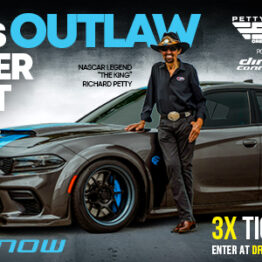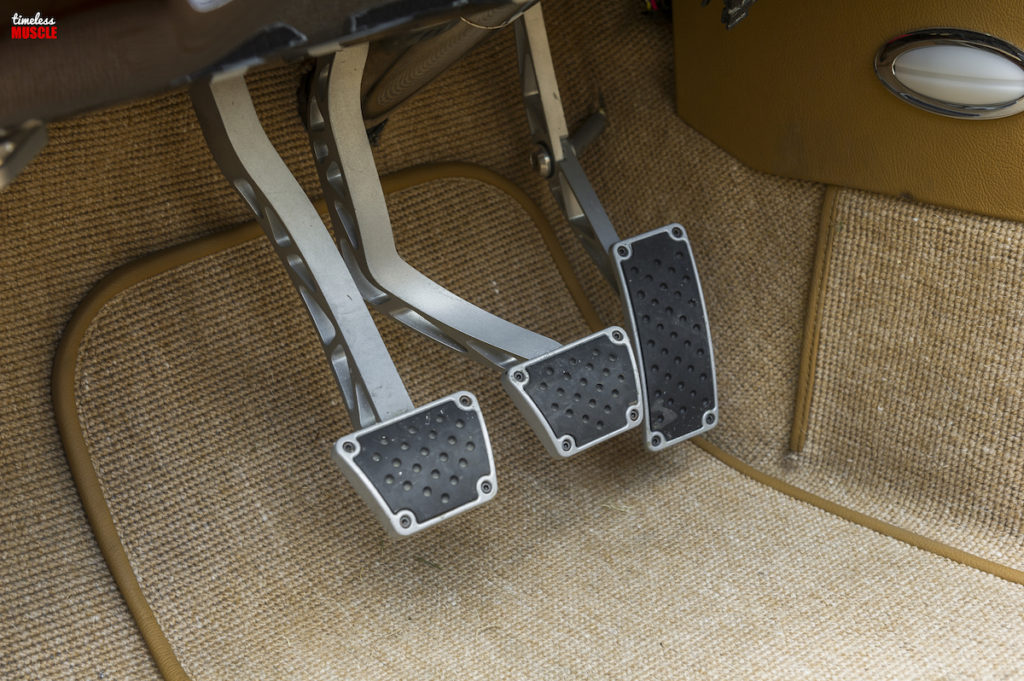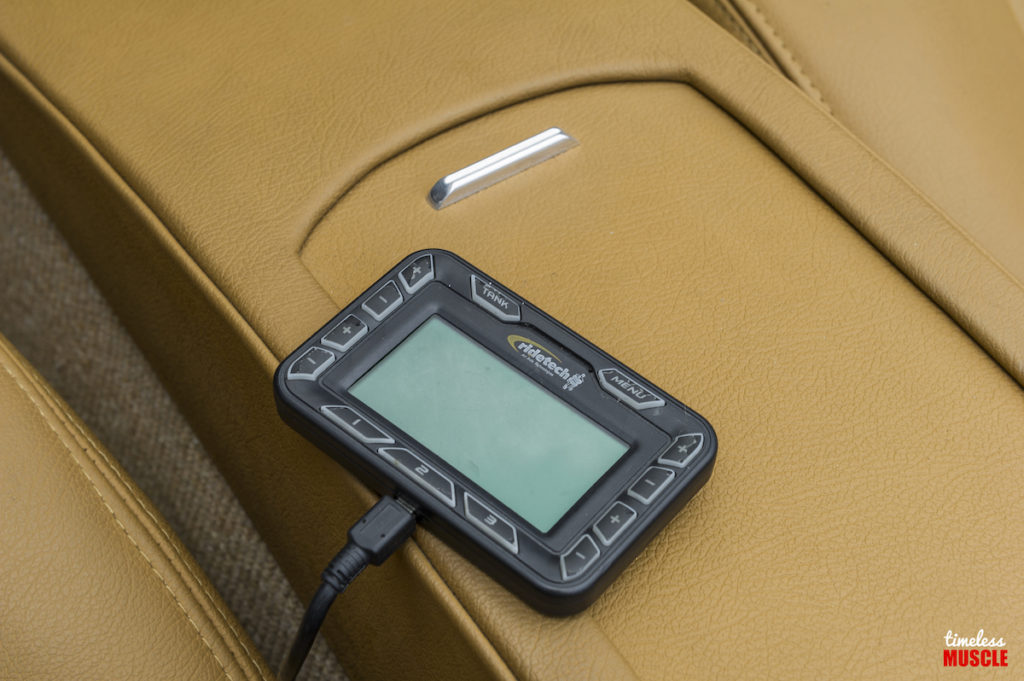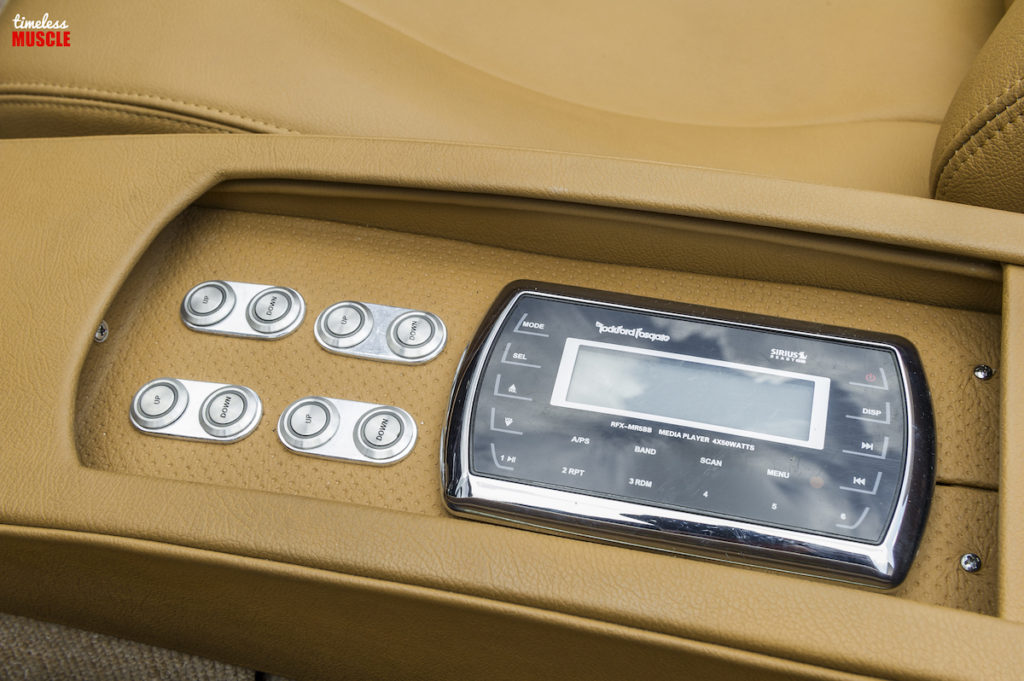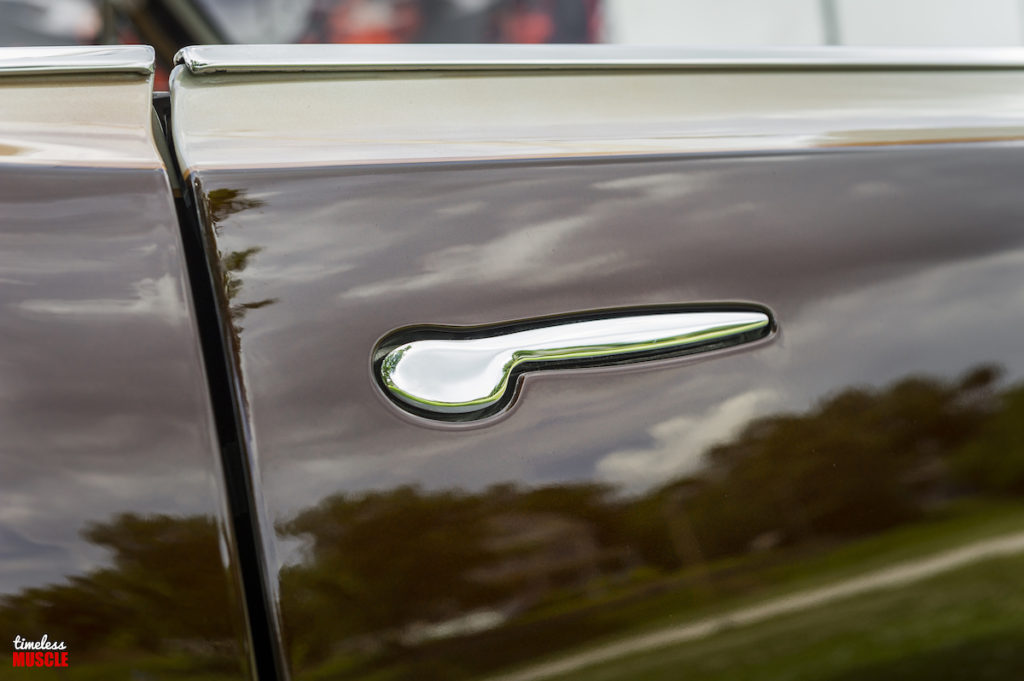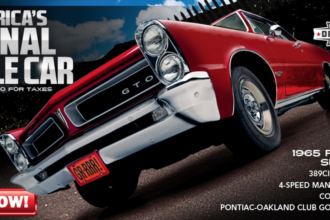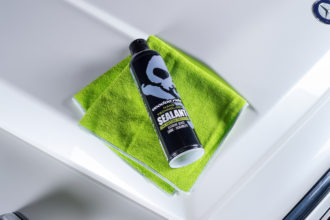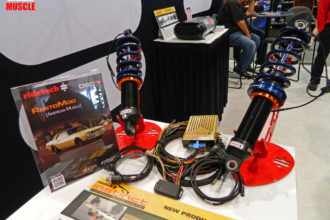photos by: Grant Cox
Taking a ’65 GTO Droptop to Levels Never Achieved
The original Muscle Car Era, also know as the Golden Age, seemingly came out of nowhere. Most claim that it kicked off in 1964 with the Pontiac GTO, based on the formula of creating a factory hot-rod from using a midsize car, with an engine borrowed from the full-size model of that particular brand.
You can argue that it dates back a bit earlier than that, even as far back as the 1940s, but by most accounts the ’64 GTO is the one that’s credited for starting it all. Based on the midsize, or intermediate, Tempest the GTO packed a 389 cubic-inch powerplant with available 3×2-bbl. carburetors, known as Tri-Power, as an additional option.
For 1965, despite a makeover, the GTO carried on with the same basic mechanical format as its predecessor; a 335 hp 4-bbl carbureted 389 could also be leveled-up with a trifecta of 2-bbl carburetors, that bumped the horsepower up from 335 hp to 360 hp, and bumped up the peak torque level from 424 to 431. With the 4-speed Muncie shifting the gears, a Posi differential out back and a Tri-Power under the hood in a hardtop GTO, the midsize Poncho was good for a quarter-mile blast in 14.5 seconds, depending on who you ask.
Over the years and through the decades, many enthusiast have done some very unusual things to these cars. The Monkeemobile is a perfect example, for instance. Of course not all modified GTOs suffered such a ridiculous fate, as Charles Jenkins’ example has its own unique take.
Having picked up the car over a decade ago out of a classic automotive museum, the GTO quickly lost its luster with Charles just after a few miles, when the rearend fell out of the car due to hidden, unforeseen rust issues. Not really interested in dumping a ton of money back into the car just to still have a stock GTO, he decided to go full-bore Pro-Touring. Looking to bring in the best on the project, Charles hired Gary Hagar and the good folks over at H.A.C.K. Shack Inc. for the task at hand.
Under the hood, the 389 was yanked in favor of a Butler Performance built 455 — bumped up to a full 467 cubic-inch displacement. The custom-grind cam specs and other small aspects of the engine build provides plenty of torque and just the right amount of horsepower for easy causing power and brutal full throttle blasts — equating to 400 hp at 456 lb-ft of twist to the rear tires.
The bored-over Poncho is topped off with an Edelbrock intake manifold and a complete F.A.S.T. EFI system, with a 900 CFM throttle body. The spent fumes are expelled through a pair of Hooker long-tube headers with a flanged 2-inch H-pipe and 3-inch diameter tubing. There weren’t any catalytic converters in 1965, so there’s no reason to have them now. With a MSD digital ignition box in place in the engine compartment, helps the Butler mill keeps spark control in check.
Backing the impressive engines a Tremec TKO 500 5-speed gearbox, mated to a Centerforce pressure plate and clutch that send power to the Strange/Dana 60 rearend. The gear ratio isn’t important, but what is important is the fact that it was narrowed, just so that it can fit the Billet Specialties 15-inch wide rear wheels inside the rear quarter panel. The measure in at 20-inches in diameter and the matching front are only a bit smaller, at 18×8 — sorry traditionalists!
Tucked behind the wheels are Baer 14-inch rotors and 6-piston calipers at all four corners, which help bring the drop top Goat to a halt, and are much needed in a pro-touring build like this. Speaking of, the aforementioned billet wheels are wrapped in Mickey Thompson Sportsman S/R rubber at all four corners, improving grip substantially over what the old bias-plys ever could!
Clearly you can tell by looking at this car, that the suspension has been substantially upgraded, given its stance. Long gone is the stock-type suspension, and in its place went a combination of some of the best hardware available for the GM A-body. Running down the parts list is like compiling a who’s-who in the suspension world.
Up front, is a Heidts Super Ride II complete suspension kit, with includes A-arms, front sway bar and end links. Out back, is a Ridetech Shockwaves air ride system with a 5-gallon air tank. Adding quite a bit of rigidity to the ragtop body is custom full tube and sheetmetal steel chassis… which is far beyond anything these cars had left the factory with in 1965. A Flaming River steering rack is bolted to it, and helps the car corner much easily.
On the inside, the interior has been given quite the make over! Going right out on a limb, and stating the obvious, the dashboard is one of the only things inside the cockpit that have carried over from the Goat’s original format. A Classic Instruments array of gauges keep Charles informed on engine vitals, while a Rockford Fostgate head unit wired to Kicker speakers.
The upholstery is something straight off the backs of cows with a supple tan leather covering the seats, with German weave tan carpeting. The headliner is a custom piece, based on material found in a late-model Mercedes-Benz. The whole cockpit was put together by OZ Custom Upholstery and it looks stunning!
The exterior is equally impressive, with a two-tone treatment with six coats of PPG Candy Root Beer paint as the predominant color. Looking to add some contrast, tan pearl stripes had been laid down over the hood, fenders and the top of the doors. The factory door handles have been shaved, with custom billet door handles that sit flush with the door panels but allow easy access into the car.
One of our favorite touches to the car is the Shaker style hood scoop that looks similar to the factory Ram Air scoop, but actually sits stationary on top of the throttle body once the hood is open. It lends a nod to the second-generation Trans Am, but is a direct reminder of what the ’65-67 GTO hood scoop looked like. In fact, with the hood closed you’d barely notice the change unless you’re among the GTO faithful.
While Charles’ GTO might not be to everyone taste, we really appreciate the amount of custom work, the execution and the look of the Root Beer paint scheme. It’s a peek of where the custom muscle car scene is headed

Rick Seitz is the owner and founder of AutoCentric Media, the parent company to Timeless MuscleCar Magazine, and has a true love and passion for all vehicles. When he isn’t tuning, testing, or competing with the magazine’s current crop of project vehicles, he’s busy tinkering and planning the next round modifications for his own cars.

